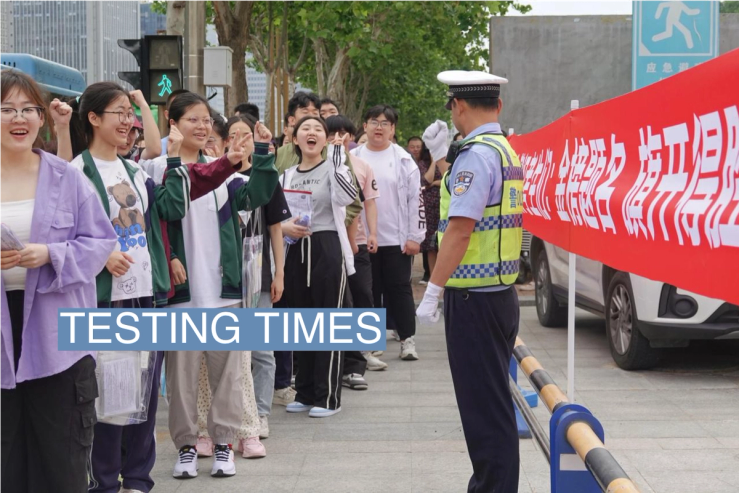
Semafor Signals
China’s AI surveillance enters the classroom
Insights from Sixth Tone, Harvard Magazine, and Modern Diplomacy

The News
Widespread surveillance and facial recognition AI have built China’s reputation as a police state, and that technology is now being deployed in the classrooms.
Ahead of this week’s gāokǎo — the country’s notoriously difficult college placement exam that essentially determine students’ futures — several provinces announced they would be using an “artificial intelligent patrol system” to monitor students during the test, according to the South China Morning Post.
The software can reportedly alert proctors to potential actions of cheating, such as if students are flipping their booklets too frequently or displaying nervous behavior, according to local media.
SIGNALS
China uses sophisticated tech to crack down on cheating in gāokǎo season
“Cheating [on the gāokǎo] has become so widespread and ingenious that the government felt compelled to up its enforcement methods,” according to Global Citizen, an international social justice and youth advocacy agency. In many cities, students taking the test are restricted to the campus for several days to prevent them from accessing other resources. But anti-cheating technology is becoming more sophisticated: Beyond metal detectors meant to catch phones, police in recent years have also used electromagnetic pulse guns that can disrupt radio and cell signals near campuses. And many schools now have facial recognition systems to prevent siblings or friends from taking the exam on behalf of students, according to Sixth Tone.
Lack of data privacy protection in China allowed surveillance AI to flourish
Unlike China, the West has not been able to develop sophisticated facial recognition and surveillance AI because of privacy rights. China’s surveillance AI was developed in a “feedback loop,” Harvard Magazine argued: The police provided Chinese AI firms with massive amounts of surveillance data that helped train new models, which were then returned to the police for their own deployment. AI companies then began selling AI models for commercial use, making facial recognition in China ubiquitous, from its use in hotel check-ins to using toilet paper in public bathrooms. But the public’s concern about identity theft and deepfakes finally forced some cities into enacting restrictions on facial recognition this year.
China has put guardrails on Israel’s use of AI
While China still lags in generative AI capabilities, it dominates globally in exporting surveillance AI and hardware, according to the US’ National Bureau of Economic Research. China has previously sold hardware to Israel that rights groups have warned uses AI to monitor Palestinians, Semafor previously reported. Since the Israel-Hamas war, China has grown concerned that Israel could be using Beijing’s technology to facilitate its military campaign in Gaza. In response, Beijing enacted “bureaucratic difficulties,” like new export licensing requirements that have slowed chip and other high-tech components shipments to Israel, according to Modern Diplomacy.

